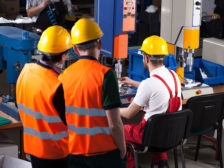Home » Keywords: » training development
Items Tagged with 'training development'
ARTICLES
Report problems & precursors early & often
Hey, you — keep that door open!
January 16, 2019
Editorial Comments
It’s not a matter of training, training & more training
Safety’s learning moment
July 23, 2018
Never miss the latest news and trends driving the safety industry
eNewsletter | Website | eMagazine
JOIN TODAYCopyright ©2024. All Rights Reserved BNP Media.
Design, CMS, Hosting & Web Development :: ePublishing






